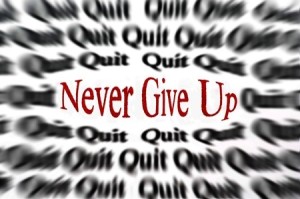Never Give Up Hope
Adam’s lead was one of those powerful tales of riches-to-rags-to-riches of drinking and drug use leading to a “low bottom” and then recovery. His bottom included being homeless; losing his job; jail; the whole works. And then he got sober. He always concluded by saying: “And I know that if I ever were to pick up again, I’m never coming back.” He meant what he said. His audience believed him. And when he did pick up, he never came back.
When I was an intern at an outpatient drug and alcohol clinic, I heard the tale of Adam’s relapse. That wasn’t his real name; I don’t think I ever knew it. But Adam’s story was my first lesson in mistaken beliefs about relapse: His mistaken belief about relapse created a self-fulfilling prophecy.
In his booklet Mistaken Beliefs About Relapse, Terence Gorski said: “A mistaken belief is something that you believe to be true and act as if it were true when, in fact, it is false.” Within it, he listed seventeen separate mistaken beliefs. Adam seems to have believed numbers 16 and 17.
Number 16: “Once you begin using it is impossible for you to interrupt your relapse before you have ‘hit bottom’ again.” Many addicts program themselves for a destructive relapse. They believe that it is better to be dead than drunk or high. This seems to be what Adam had buried in the concluding statement to his lead. Once he started, he believed there was no way he could stop. His first bottom was so low, that next was death.
It is true that once you again begin to use addictively, you can never be sure of what is going to happen. But you can have periodic moments of sanity; times where you “regain control of your thinking, your emotions, your memory and your behavior and judgment. . . . It is your responsibility to yourself and those whom you love to get help to interrupt the relapse during these moments of sanity.”
Number 17: “Successful recovery from addiction requires continuous abstinence from the time of the initial commitment to sobriety.” It is a fact that most addicts and alcoholics are not able to maintain permanent abstinence the first time they try. But this is NOT MEANT to be permission to periodically drink or use. There is a difference between a lapse—the initial return to addictive use, and a relapse—the destructive return to loss of control, addictive use.
There are two choices. The person can get help from others to return to abstinence (call your sponsor or others people in your support system; get back into treatment). Then they need to learn from the experience what went wrong; and what they need to do to stay sober in the future. Or they can convince themselves that staying sober is hopeless and continue to use destructively. “If they believe they are hopeless or that they have failed totally because they have lapsed, they will give up and not continue in their efforts to recover.” Sometimes they are lucky enough to have the right set of circumstances re-engage them in treatment or other help. Sometimes they die in their addiction like Adam.
In his blog post on Mistaken Beliefs About Relapse, Gorski discussed what he called the three most common mistaken beliefs about relapse: 1) that it is self-inflicted; 2) that it is an indication of treatment failure; and 3) once relapse occurs the person will never recover. These mistaken beliefs are differently worded than those in his booklet, Mistaken Beliefs About Relapse, but still worth reading and thinking about in their own right. Adam seems to have fallen prey to the third one.
There are two additional mistaken beliefs I hear a lot: First, that relapse is a part of recovery. Relapse is often a part of someone’s recovery journey, but it doesn’t have to be. Second, some people are “constitutionally incapable” of recovery. Here, Gorski said it best: “The consequence of believing you cannot get well is despair. Without hope there is no motivation to try again and you are condemned to a life of despair.” Never say never. And never give up hope.
What other mistaken beliefs about relapse or recovery have you encountered?
I have read and used Terence Gorski’s material on relapse and recovery for most of my career as an addictions counselor. I’ve read several of his books and booklets; and I’ve completed many of his online training courses. He has a blog, Terry Gorski’s blog, where he graciously shares much of what he has learned, researched and written over the years. This is one of a series of blog posts based upon the material available on his blog and website.



